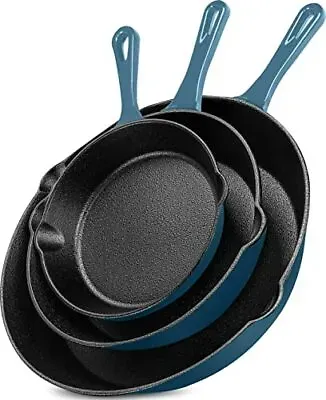
Essential Guide to Cooking with a Cast Iron Skillet for Delicious Meals
The Versatility of Cast Iron Skillets in Modern Cooking
Cast iron skillets have been a staple in kitchens for centuries, revered for their durability, heat retention, and versatility. As more people embrace home cooking and seek sustainable cooking practices, the cast iron skillet has seen a resurgence in popularity. This unimposing yet robust kitchen tool is more than just a cooking vessel; it's a culinary heritage that brings traditional techniques into modern kitchens.
One of the most significant advantages of a cast iron skillet is its exceptional heat retention. Unlike many contemporary non-stick pans that cool down rapidly when food is added, cast iron skillets maintain their temperature, allowing for even cooking. This property makes them particularly well-suited for searing meats, where a good sear locks in juices and flavors. Whether it's a steak, chicken breast, or pork chop, the cast iron skillet can achieve that perfect crust that every chef dreams of, making it an indispensable tool for protein preparation.
Another remarkable feature of cast iron skillets is their versatility. They can be used on the stovetop, in the oven, or even over an open flame. This adaptability means that a single skillet can be used for a variety of cooking methods, from frying and sautéing to baking and roasting. For instance, you can start by searing vegetables and proteins on the stove and then transfer the skillet to the oven to finish cooking. This seamless transition ensures fewer dishes to clean and allows flavors to meld beautifully.
Moreover, cast iron skillets can enhance the flavor of dishes over time. When seasoned correctly, these skillets develop a natural non-stick surface that improves with use. The seasoning, which is crafted from layers of oil polymerized onto the skillet, not only aids in cooking but imparts a distinctive flavor to dishes. Many chefs appreciate this aspect, as it adds a layer of depth to the food that cannot be replicated by modern non-stick pans.
cast iron skillet

Caring for a cast iron skillet is often seen as a daunting task, but it is quite straightforward. After each use, it’s important to clean the skillet with hot water and a stiff brush, avoiding soap that can strip the seasoning. Occasionally, the skillet should be lightly oiled to maintain its non-stick surface and to prevent rusting. This simple maintenance routine ensures that the skillet lasts for generations, making it an eco-friendly option in a world that increasingly values sustainability.
Cast iron skillets also have cultural significance, often passed down through families as treasured heirlooms. Each scratch, chip, and layer of seasoning tells a story of countless meals prepared and shared. This emotional connection to cooking and family cannot be understated. Many home cooks find joy in using the same skillet their grandparents once used, continuing a legacy of home-cooked meals filled with love.
In today's health-conscious world, the benefits of cooking with cast iron are becoming more widely recognized. Cooking with cast iron can actually contribute small amounts of dietary iron to your food, which is particularly beneficial for those who may need an extra boost of this essential mineral. This added health benefit, combined with the environmental advantages and unparalleled cooking capabilities, makes a compelling case for the cast iron skillet's revival.
In conclusion, the cast iron skillet is far more than a cooking utensil; it represents a blend of tradition, sustainability, and versatility. Its ability to deliver delectable meals while standing the test of time demonstrates why it remains a cherished item in kitchens around the world. For anyone looking to enhance their cooking experience, investing in a cast iron skillet is undoubtedly a decision to be celebrated.
-
Season Cast Iron Perfectly with GPT-4 Turbo TipsNewsAug.01,2025
-
High Quality Cast Iron Cookware - Baixiang County Zhongda MachineryNewsAug.01,2025
-
Premium Cast Iron Pan: Durable & Perfect HeatNewsAug.01,2025
-
High Quality Kitchen Durable Black Round Cast Iron Cookware Pancake Crepe Pan-Baixiang County Zhongda Machinery Manufacturing Co., Ltd.NewsAug.01,2025
-
Cast Iron Cookware - Baixiang County Zhongda Machinery | Nonstick, Heat ResistanceNewsAug.01,2025
-
High Quality Kitchen Durable Black Round Cast Iron Cookware - Baixiang County Zhongda Machinery | Non-Stick, Heat Retention, DurableNewsJul.31,2025


